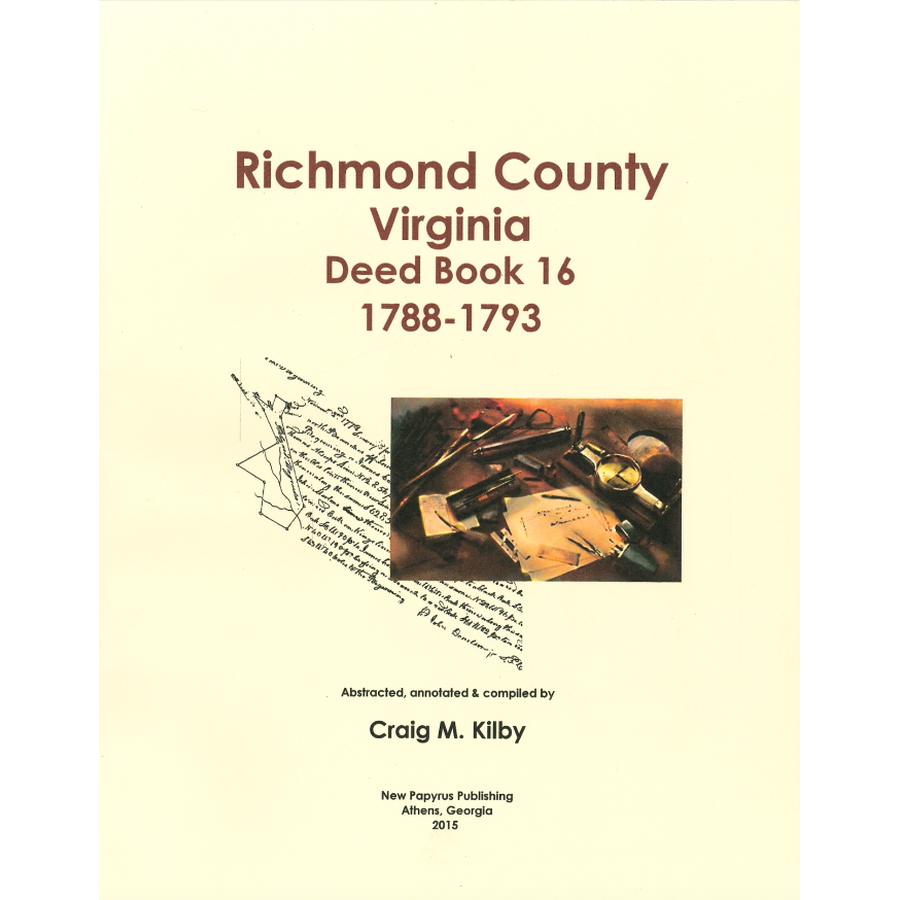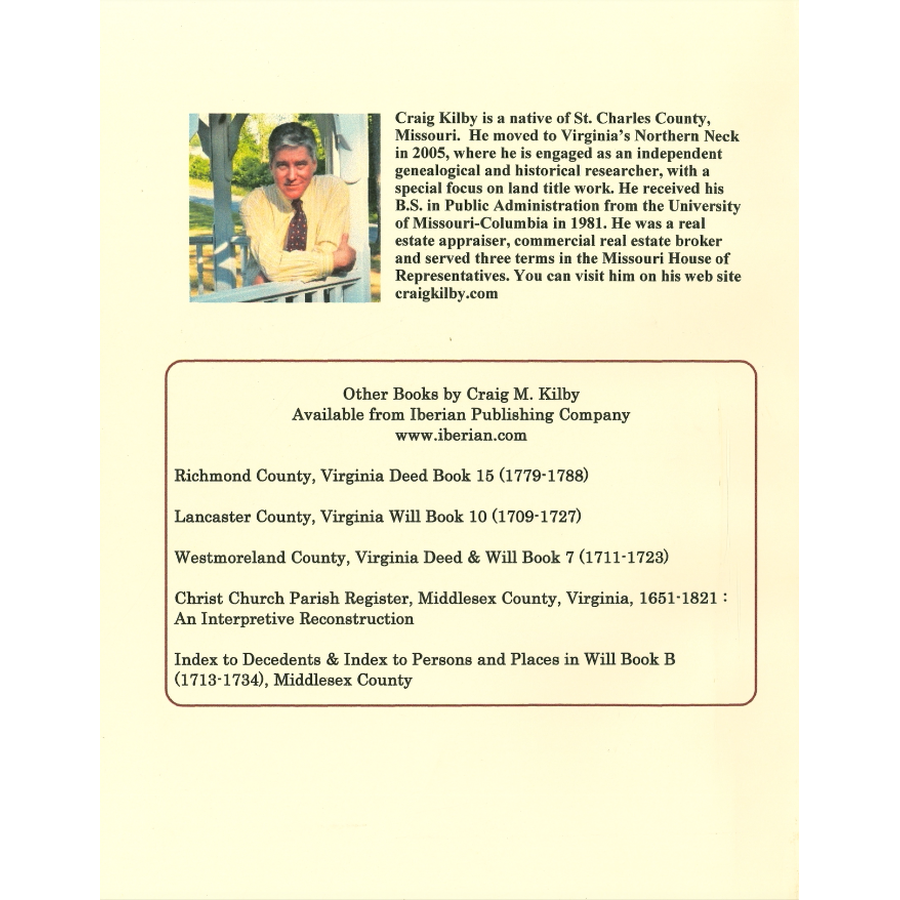Richmond County, Virginia Deed Book 16, 1788-1793
Couldn't load pickup availability
The New Normal: This deed book covers the period from 1788 to 1793. George Washington is President, the Revolutionary War is receding into history, primogeniture has been repealed, and the U.S. Constitution has been ratified. The only thing still unsettled is a national currency. It is not surprising that this deed book reflects a general "winding down" and settling up of affairs. Estates are settled, out-of-area heirs are ending their ties to their home counties, and properties are being consolidated. Old families are dying out, and a new group of landowners is taking shape. To be sure, the old-line families are still represented here. The marriage contract between Robert Beverley, Jr. of Essex County and Jane Tayloe is a good example, though Beverley's father's contribution to the marriage is the 1,000 acre Ewehill Plantation in far-off Culpeper county and 60 slaves. Jane Tayloe's contribution is her "fortune" as the daughter of the extremely wealthy Col. John Tayloe, under the care of her old-guard guardians. The Carters are still represented, but rarely in the role of acquiring new land, and more often are settling up previous issues. The Lees make their appearance as well, again in a "winding down" of affairs.
The new landowners are not really new. They had been there all along. But we gather some of them are moving up a notch, and slowly assuming duties once reserved to the former elites. On the other hand, a number of them are moving down a notch, as evidenced by the number of recorded mortgages of land and personal property. In essence, the water is leveling out, and becoming the "new normal."
At the end of the day, of course, land never moves. Only people do. This deed book is but a chronicle in time of the people who passed over it.
This book is arranged in five sections. First, a general index to principal parties to enable the reader to quickly identify a specific deed or transaction. Second is the main body of the deed book itself, annotated with previous deeds of conveyances and wills devising land. Considerable genealogical material is presented in this section. Third is a comprehensive name index, followed by two appendices: one for places, streams, mills, warehouses and plantations and the other for out-of-county residents.
Craig M. Kilby
2015
107-RCHD16

